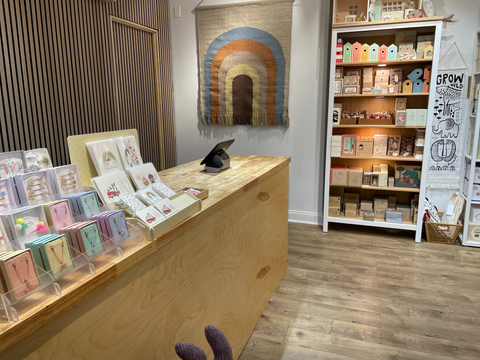



Copernicus
The Thermodynamic Drinking Bird
Thermodynamic Heat Engine.
Wow! Thermodynamics & pressure differentials! Enjoy this classic physics demonstration in a handy duck shape. This thirsty bird perpetually bobs long as it has a glass of water to dunk in. Instructions on box.
This is not a toy.
Age 14+. Fragile Glass
The drinking bird is a heat engine that exploits a temperature difference to convert heat energy to a pressure difference within the device, and performs mechanical work. Like all heat engines, the drinking bird works through a thermodynamic cycle. The initial state of the system is a bird with a wet head oriented vertically.
The process operates as follows:[9]
- The water evaporates from the felt on the head.
- Evaporation lowers the temperature of the glass head (heat of vaporization).
- The temperature decrease causes some of the dichloromethane vapor in the head to condense.
- The lower temperature and condensation together cause the pressure to drop in the head (governed by Equations of state).
- The higher vapor pressure in the warmer base pushes the liquid up the neck.
- As the liquid rises, the bird becomes top heavy and tips over.
- When the bird tips over, the bottom end of the neck tube rises above the surface of the liquid in the bottom bulb.
- A bubble of warm vapor rises up the tube through this gap, displacing liquid as it goes.
- Liquid flows back to the bottom bulb (the toy is designed so that when it has tipped over the neck's tilt allows this). Pressure equalizes between top and bottom bulbs.
- The weight of the liquid in the bottom bulb restores the bird to its vertical position.
- The liquid in the bottom bulb is heated by ambient air, which is at a temperature slightly higher than the temperature of the bird's head.
If a glass of water is placed so that the beak dips into it on its descent, the bird will continue to absorb water and the cycle will continue as long as there is enough water in the glass to keep the head wet. However, the bird will continue to dip even without a source of water, as long as the head is wet, or as long as a temperature differential is maintained between the head and body. This differential can be generated without evaporative cooling in the head; for instance, a heat source directed at the bottom bulb will create a pressure differential between top and bottom that will drive the engine. The ultimate source of energy is the temperature gradient between the toy's head and base; the toy is not a perpetual motion machine.

